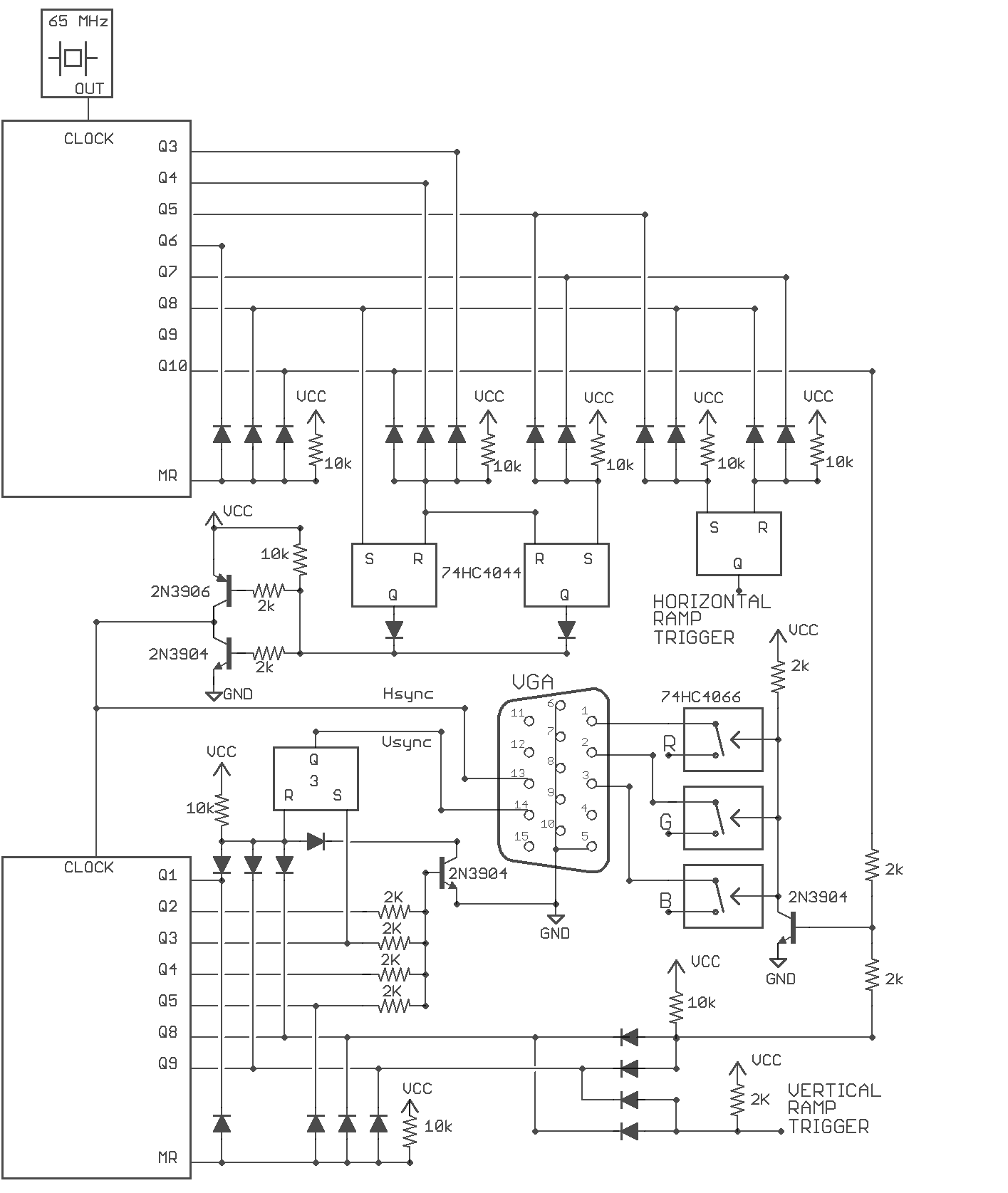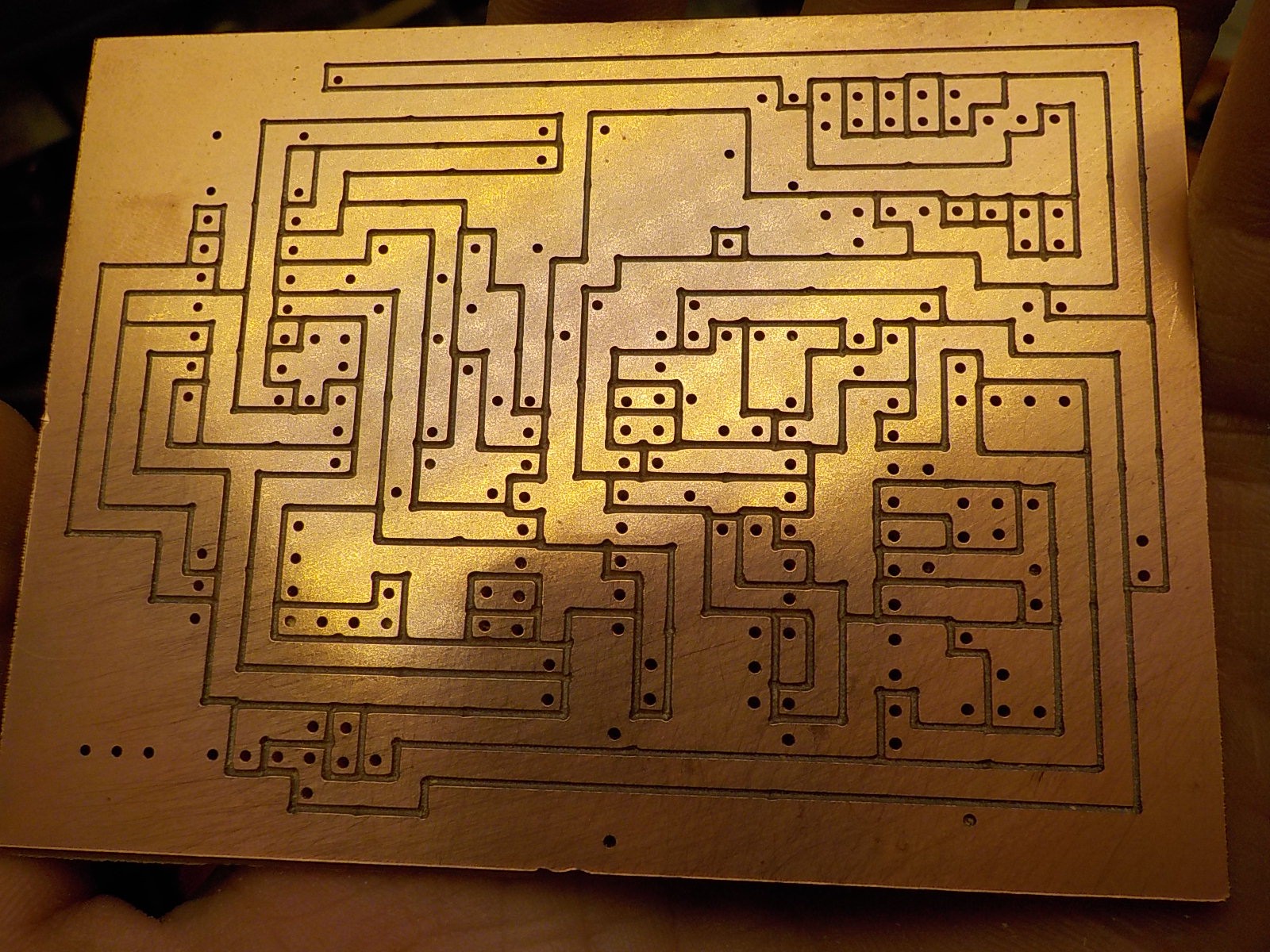The first VGA board didn't turn out the way I wanted. It was double sided and too big. I briefly considered taking the easy way out with a microcontroller, but then I realized I could make the board single sided and half the size by going even further back in time.

If I construct AND gates using only diodes and resistors I can avoid a spaghetti of traces running between gate ICs. I have the freedom to drop the individual diodes and resistors wherever they're most convenient.

This is the VGA board redesigned using diodes for all the AND gates as well as two NOR gates implemented with resistor-transistor logic.
One of the problems with diode logic is a 0.7v drop through each gate. I needed to add an NPN PNP pair to amplify the Hsync pulse generated by the diode logic. This wasn't an issue with the Vsync pulse because it comes directly out of an SR latch.
This circuit does not generate ramps with resistor ladder DACs off the binary counters the way the last one did. Those did not cooperate with the diode logic so I went back to regulated capacitor charging (not part of this board).
This board has two outputs used to trigger the ramp pulses. There were some issues with using Hsync/Vsync pulses as ramp triggers that I'll cover later.
The final PCB ends up being only 3.65" x 2.55" on a single layered board and using only two jumper wires. This is half the size of the last one, and that needed to be double sided.

 Russell Kramer
Russell Kramer

Discussions
Become a Hackaday.io Member
Create an account to leave a comment. Already have an account? Log In.